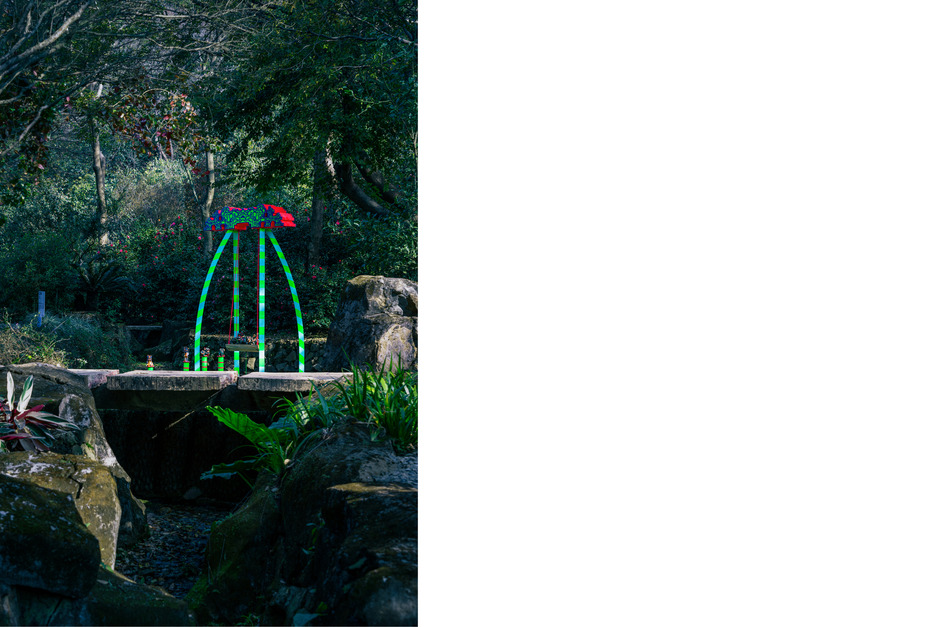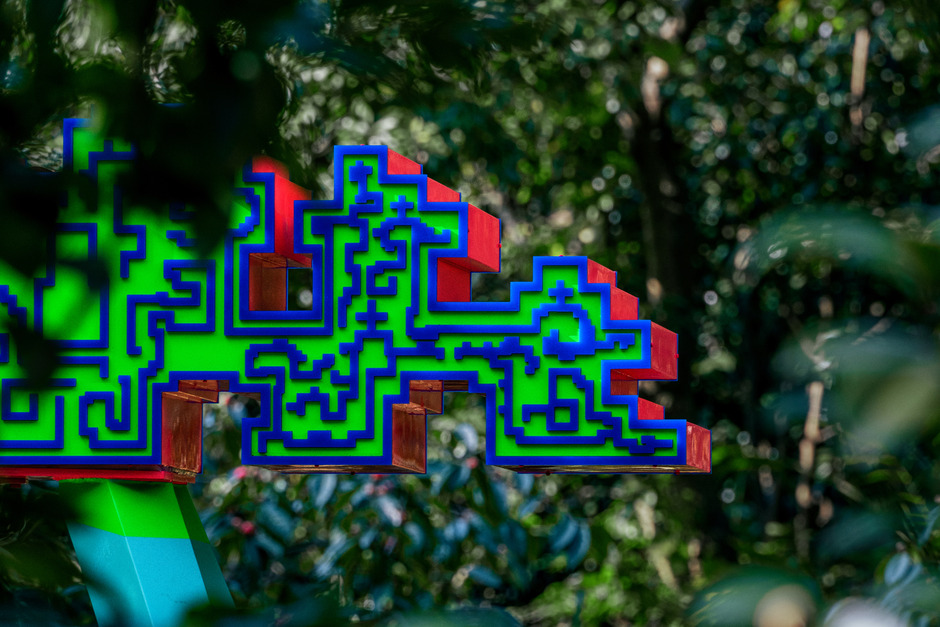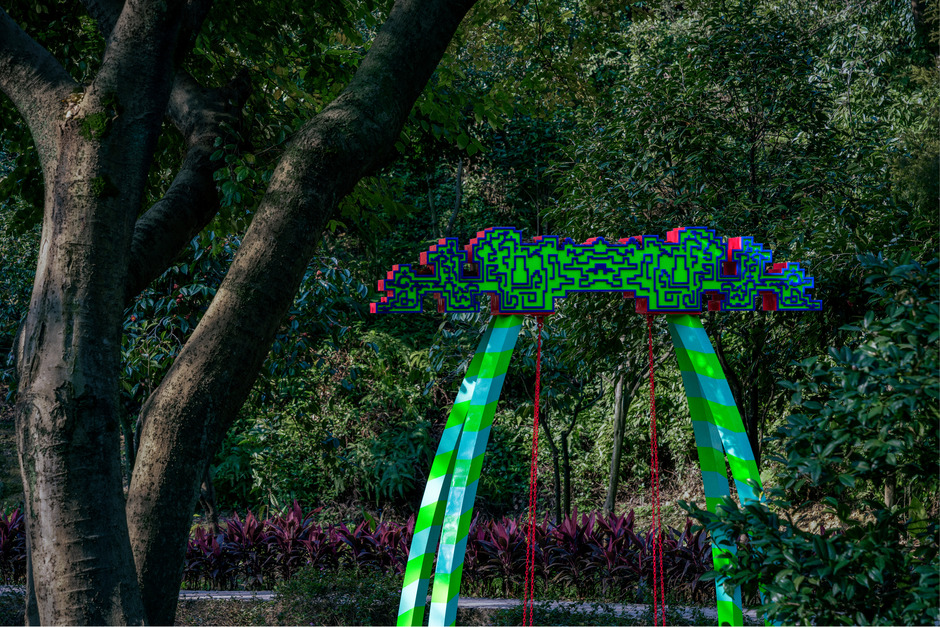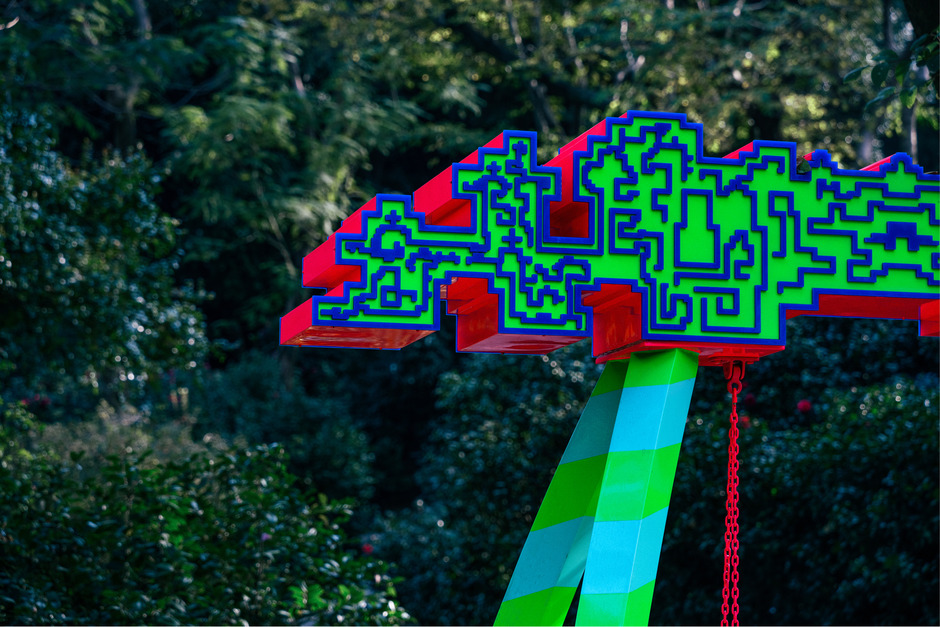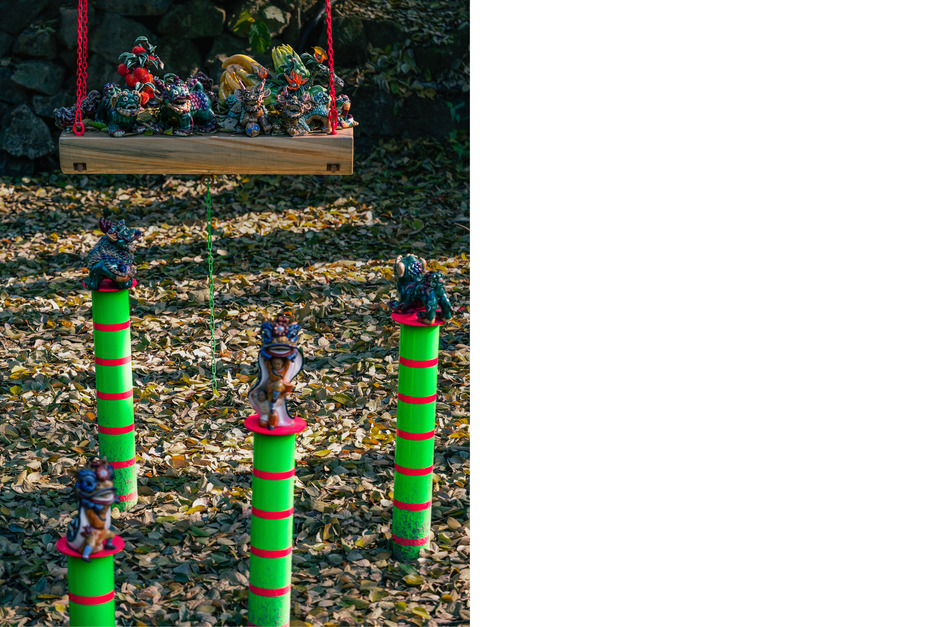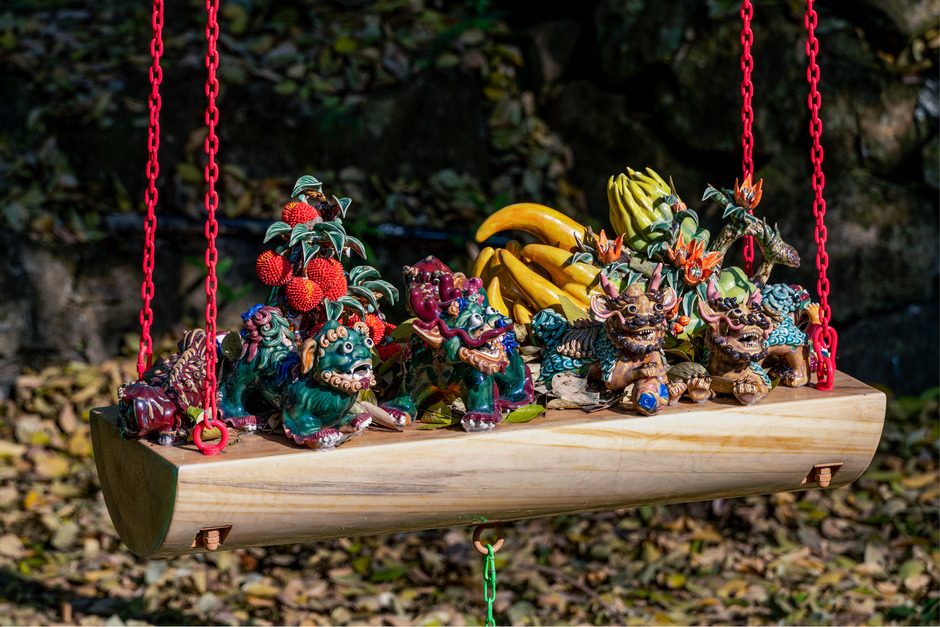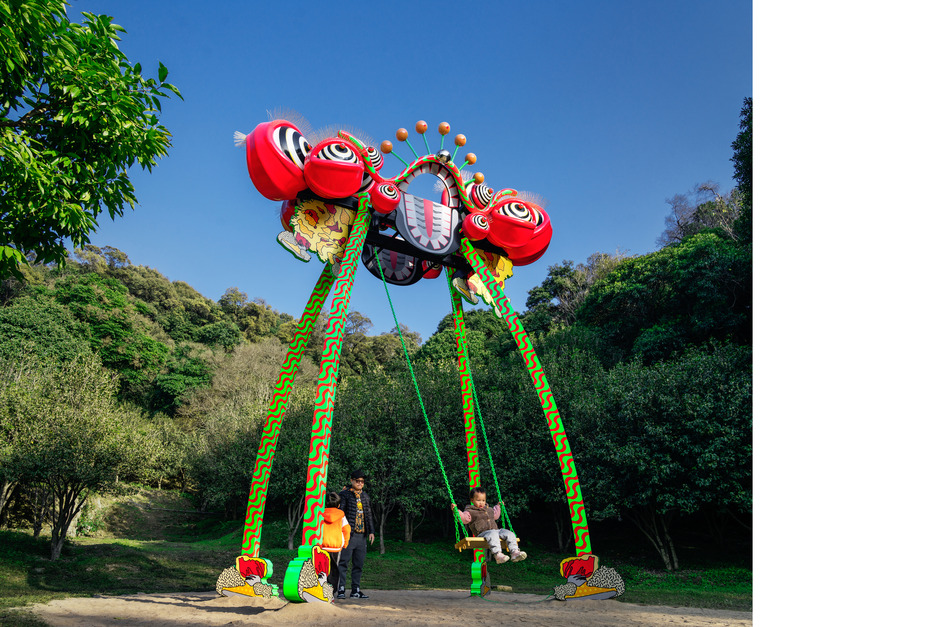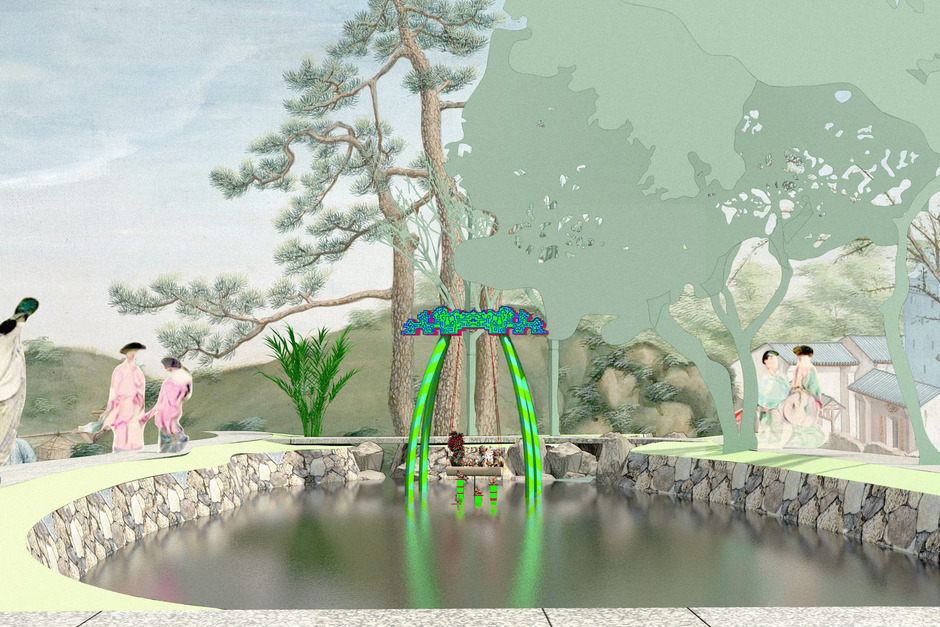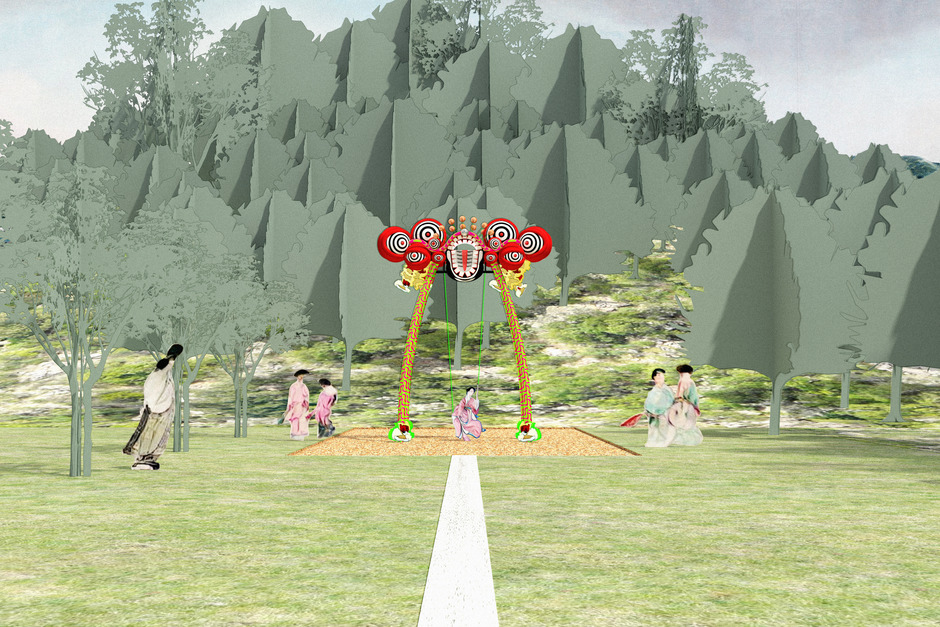
Foshan Swings
Foshan
BAM delivers two separate art sites for this Art Field, both located on Xichao Mountain. They are titled "Landing" and "Swing Up".
LANDING:
The site is a pond with seasonal water level changes, which we see as a microcosmic ocean. Sculptural pillars rise from the seabed and witness the ebb and flow of the tides. Some mythical creatures in the water have already come ashore, while others are still striving for the opportunity. The shelter under the eaves serves as a lighthouse, illuminating the moment of celebration for all the creatures that have come ashore.
The language on the roof is derived from the local architectural ridge forms in Foshan and has been abstracted. The fluorescent colors emerge as a visual threshold, a kind of liminal retinal space under the dark shade of the Camphor trees. The square support columns simulate the bent stalks of the hyper-exotic plant species "Square Bamboo" within the site area.
At a detail level, one can see ceramic crafts fixed on the submerged and suspended logs, depicting details of the water level. The crafts are sourced locally from Foshan, and the theme of mythical creatures (animals) is also responded to in another artwork called "Swing Up."
SWING UP:
With the swing's motion, it carries the auspicious blessings of Lingnan culture and the good fortune of "Gao sheng."
The traditional lion dance form is deconstructed and reorganized, with certain auspicious elements enlarged or connected together. The main elements, the eyes, have various shapes—some appear sleepy, while others are sharp and piercing. The mouth is wide open, revealing teeth and a tongue. The spring is fixed to the lion's nose and rests on its beard, gently swaying in the wind. The lion's legs are in a dancing pose, ready to ascend, and the pattern is also reconstructed. Similar to "Landing," the support column, simulating the bending of the "Sifang bamboo" plant, is connected to the lion's feet, abstracted into four longer lion legs. These four "lucky feet" firmly touch the ground, as the saying goes, "Touch the lion's feet, and happiness will come."
“上岸“ 和 “高升”
“上岸“:水位随季节变化的池塘是微观世界里的海洋。水位的柱子见证了潮起潮落。水中的神兽有些已经上岸,有些还在争取机会。屋檐下的庇护所为海洋点亮灯塔,是所有上岸的神兽欢庆的时刻。 屋顶的语言取自佛山本地建筑屋脊形态并进行了抽象。荧光的颜色在乔木的庇护下跳脱出来。方形的支撑柱模拟了场地区域内特殊的植物品种“四方竹”被压弯了的枝头。 更近距离的尺度上,可以在细节里看到水位住上和悬挂的原木上固定的陶瓷工艺品。工艺品采购自佛山本地,神兽(动物)形象的主题也会在另一个作品“高升”中得以回应。
“高升”:秋千的摇摆带来了岭南的吉祥祝福,也带来了“高升”的好运。 传统舞狮的形态被解构和重组,原本吉祥的元素被局部的放大或连接在一起。眼睛作为主要的元素拥有不同的形态,有的昏昏欲睡,有的炯炯有神。嘴巴彻底张开露出牙齿和舌头。弹簧与鼻子固定在一起立在胡子上,随风微微摆动。狮腿舞动等待着步步高升,同样也进行了图案的重构。与“上岸”类似,支撑柱模拟压弯了的“四方竹”与狮子脚相连,抽象成四条更长的狮子腿。四只“好运脚”支撑在地面上,正所谓“摸摸狮子脚,幸福少不了”。
